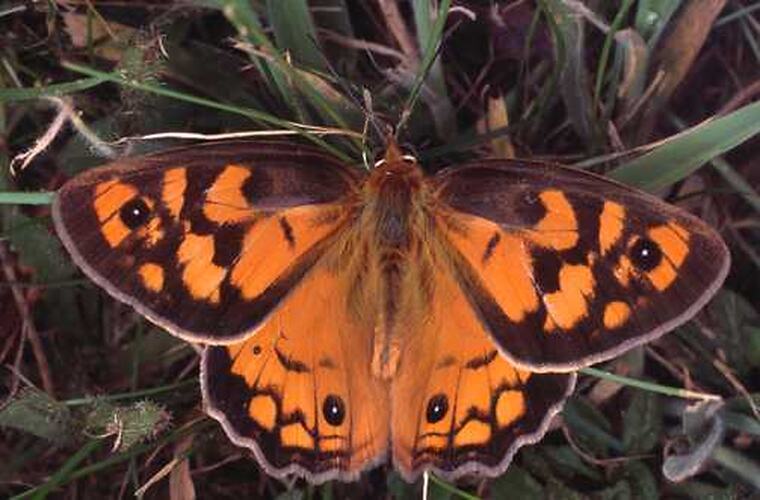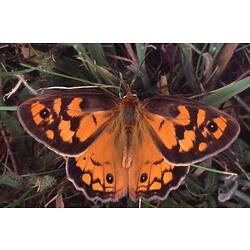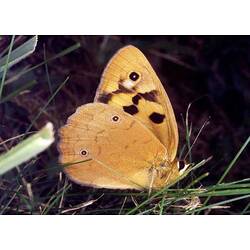General Description
Above: black with orange markings and a white-centred black eyespot on each wing. Below: similar to above, but forewing more extensive bands on inner margin of two eyespots. Hindwings without tails. Antennae clubbed. Wingspan up to 6 cm.
Biology
The butterflies are present from mid-summer to autumn and most abundant in February-March. The eggs require moist habitat as they are less resilient to drying out than similar butterfly species. The caterpillars feed at night on a range of soft grasses such as Kangaroo and Wallaby Grass.
Distribution
South-eastern mainland Australia and Tasmania.
Habitat
Forested mountains and their surrounding hills.
More Information
-
Animal Type
-
Animal SubType
-
Brief Id
This brown, black and orange butterfly has a white-centred black eyespot on each wing.
-
Colours
Brown, Orange
-
Maximum Size
6 cm
-
Habitats
-
Diet
Nectar
-
Endemicity
-
Commercial
No
-
Conservation Statuses
CITES: Not listed, FFG Threatened List: Not listed, DSE Advisory List: Not listed, IUCN Red List: Not listed
-
Plants
Grasses
-
Flight Start
January
-
Flight End
April
-
Taxon Name
-
Scientific Author
Waterhouse, 1937
-
Common Name
Shouldered Brown
-
Kingdom
-
Phylum
-
Subphylum
-
Class
-
Order
-
Family
-
Subfamily
-
Genus
-
Species Name
penelope



